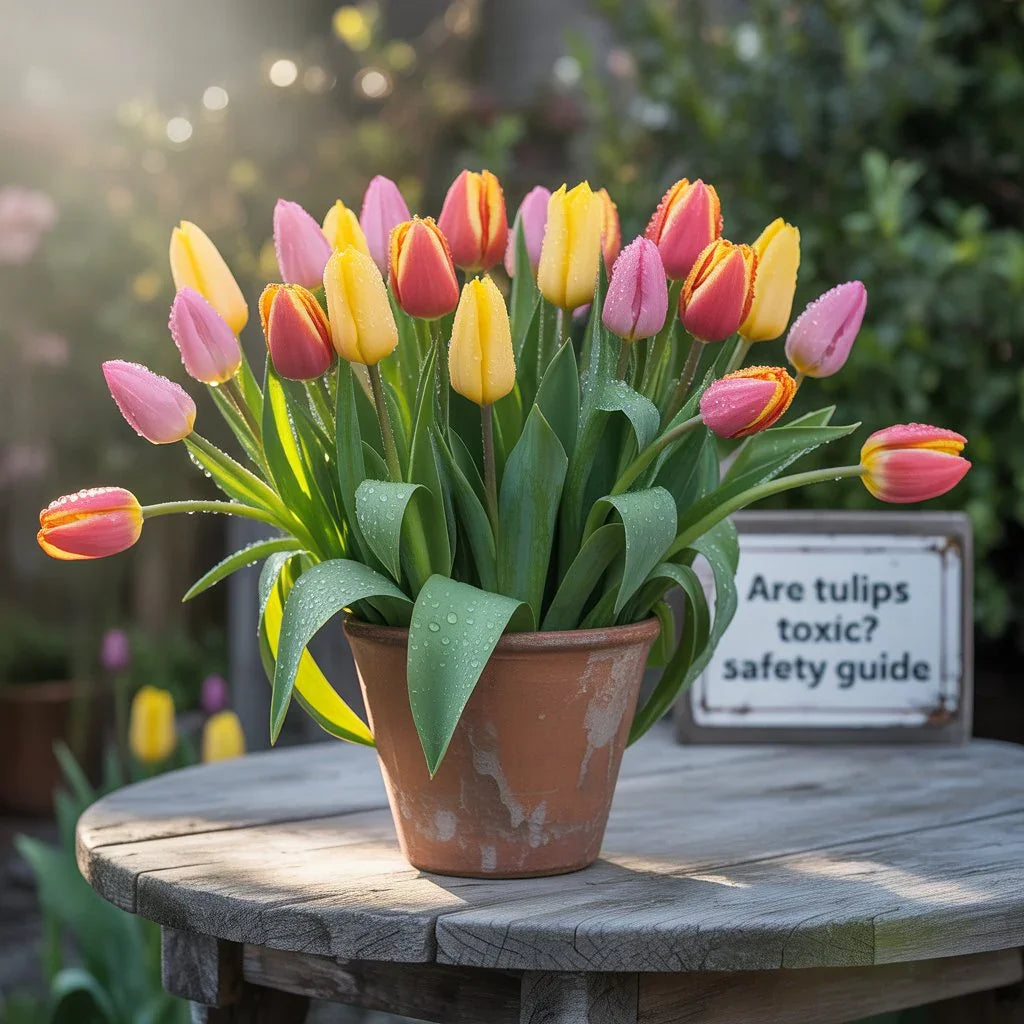
Are Tulips Toxic to Cats, Dogs, or Humans? Full Safety Guide
Share
Tulips are celebrated for their vibrant colors and elegant petals, but many pet owners and parents wonder: Are tulips toxic to cats, dogs, or humans? Understanding this is crucial to protect your loved ones while still enjoying these beautiful flowers in your home or garden. This guide explains the risks, signs of poisoning, and how to keep everyone safe.
Are Tulips Toxic to Cats?
Yes, tulips are toxic to cats, especially the bulbs, which contain tulipalin A and B—compounds that irritate the digestive system. When ingested, cats may experience drooling, vomiting, loss of appetite, or lethargy. Severe cases can cause breathing problems or abnormal heart rates.
Steps to take if your cat eats tulips:
-
Remove any plant material from your cat’s mouth right away
-
Rinse the mouth gently with water
-
Call your veterinarian immediately for professional advice
-
Watch for symptoms such as vomiting or excessive drooling
Are Tulips Poisonous to Dogs?
Dogs face the same risks as cats when exposed to tulips. The bulbs pose the greatest danger, but leaves and stems can also irritate a dog’s stomach. Signs of tulip poisoning in dogs include drooling, pawing at the mouth, vomiting, diarrhea, reduced appetite, and fatigue. In severe cases, tremors or heart irregularities can occur.
What to do if your dog ingests tulips:
Seek veterinary care immediately. Early treatment reduces the chance of complications and speeds recovery.
Are Tulip Bulbs Poisonous to Humans?
While tulip flowers are generally safe to handle, tulip bulbs are mildly poisonous to humans if eaten. They can cause stomach discomfort, nausea, and in rare cases, skin irritation for gardeners who handle them frequently. This reaction is sometimes called “tulip fingers,” a mild rash from repeated contact with the bulbs.
Safety tips for humans:
Wear gloves when planting or handling tulip bulbs, store them away from children, and never consume bulbs or petals unless they are labeled as edible and safe for culinary use.
Are Tulips Edible or Safe to Keep Indoors?
Tulip petals are occasionally used in culinary presentations, but they should only be consumed if sourced from food-safe, pesticide-free suppliers. For most households—especially those with pets or small children—tulips should be treated purely as decorative flowers and kept out of reach.
How to Keep Pets Safe Around Tulips
You can still enjoy tulips safely at home with a few preventive measures:
-
Plant tulips in fenced areas or elevated garden beds to keep pets away
-
Place indoor arrangements on high shelves or in closed rooms
-
Supervise pets outdoors if bulbs are planted in the yard
-
Consider pet-safe alternatives such as roses, orchids, or sunflowers if safety is a major concern
What to Do if Your Pet or Child Eats Tulips
If ingestion occurs, act quickly. Remove any plant material from the mouth, rinse thoroughly with water, and seek professional advice from a veterinarian, pediatrician, or poison control center. Bringing a photo or the plant label helps medical professionals provide faster, more accurate care.
Final Thoughts on Tulip Safety
Tulips symbolize renewal and love, making them one of spring’s most cherished flowers. However, their bulbs, stems, and leaves can be toxic if eaten by pets or young children. By knowing the risks and following simple safety practices, you can enjoy tulips without worry.
For seasonal arrangements that prioritize both beauty and peace of mind, explore Black Petals’ curated bouquets—crafted with care and delivered fresh across the U.S.
